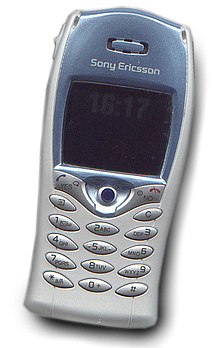Sony Ericsson T68

Launched in time for the 2001 Christmas season, the candy bar-style Ericsson T68m was the first mobile phone made by Ericsson to have a colour screen, a passive LCD-STN with a resolution of 101×80 and 256 colours. Despite its diminute size (3.94×1.89×0.79 in or 100×48×20 mm, 2.96 oz or 84 g), it was one of the most feature-rich mobile phones at the time, with Bluetooth, IrDA port, GPRS 3+1, tri-band compatibility (900 MHz, 1800 MHz and 1900 MHz), SMS with T9 (predictive text), EMS, WAP, and customizable monophonic ring tones. At its release, the phone cost around € 500, in either two-tone grey or all-gold.
In 2002, after a slight cosmetic redesign and a software upgrade, the T68m was re-released as the Sony Ericsson T68i, as by then Ericsson had merged with Sony Corporation to produce mobile phones as Sony Ericsson. The upgrade, also available to owners of the T68, provided a built-in e-mail client, SyncML support, and, for the first time ever, two-way MMS with full SMIL implementation. The T68i is known for being a highly effective example of stealth marketing. Before being released Sony Ericsson paid actors to pretend to be tourists and asked people to take pictures of them with the T68i.
A camera was not present, which was sold as an add-on and, at the end of the model life cycle, was offered with the phone.
Calendar Items, Wallpaper Images, Screensaver Images, Pictures of Senders, and Ringtones can be sent to the T68i through the Bluetooth protocol, or infrared.
The T68i was the first Ericsson (Sony) free from brominated flame retardants (BFRs).
Variants
- T68m
- T68i
- T68ie
